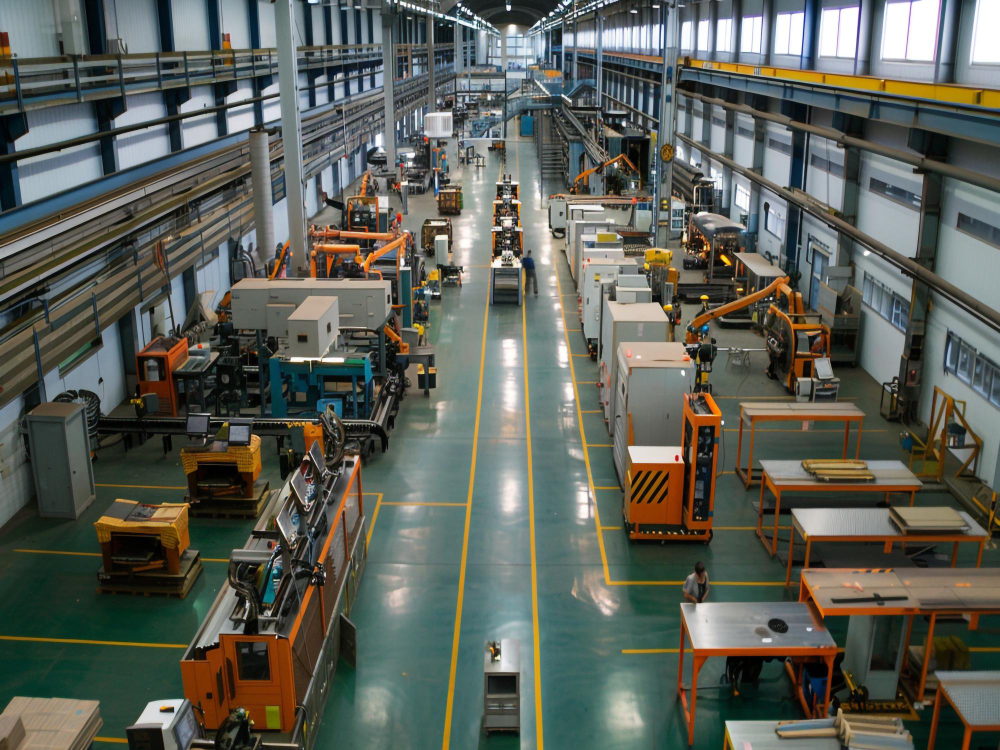Innovation and Tradition: Inside a Chinese Factory
Category: Chinese chance Date: 2024-10-02 Views: 1
In an era marked by rapid technological advancements and a strong sense of heritage, Chinese factories stand at the crossroads of innovation and tradition. This journey into the heart of China's manufacturing sector reveals how the nation's industrial base blends centuries-old practices with modern technology to remain at the forefront of global commerce. As we delve into the complexities of these facilities, we uncover a world where tradition fuels innovation, and sustainability and skilled labor play pivotal roles in shaping the future.
1. The Intersection of Innovation and Tradition in Chinese Factories
Chinese factories have long been hubs of innovation, where the echoes of the past meet the rhythms of the future. In places like the porcelain workshops of Jingdezhen or the silk weavers of Hangzhou, traditional techniques are preserved, while cutting-edge technologies enhance productivity and quality. These factories are not just manufacturing sites but are also custodians of cultural heritage, embedding traditional craftsmanship into modern products that resonate both locally and globally. This synthesis not only honors the past but also secures a competitive edge in the international market, exemplifying a commitment to excellence that is uniquely Chinese.

2. The Rise of Smart Factories
The transformation into "smart factories" is revolutionizing China's manufacturing landscape. Facilities equipped with automation, the Internet of Things (IoT), and artificial intelligence (AI) are becoming standard. These technologies enable real-time monitoring of production lines, predictive maintenance of equipment, and streamlined logistics. One striking example is a factory in Shenzhen that utilizes AI to oversee its electronics assembly, reducing errors and improving safety. This leap towards automation not only enhances efficiency but also positions Chinese factories at the vanguard of the fourth industrial revolution.
3. Sustainability Practices in Chinese Manufacturing
Sustainability is increasingly at the forefront of global manufacturing ethics, and Chinese factories are leading the charge in eco-friendly practices. From renewable energy initiatives to zero-waste policies, these factories are setting benchmarks for environmental stewardship. Companies like BYD in Shenzhen are pioneering the use of recycled materials in car manufacturing, significantly reducing their ecological footprint. The integration of green technologies not only mitigates environmental impact but also aligns with global standards, fostering a more sustainable future for everyone.
4. Challenges and Solutions Faced by Chinese Factories
Despite their advancements, Chinese factories face numerous challenges, including labor shortages and stringent international regulations. Innovations in robotics and automated machinery have become key solutions, filling gaps in manual labor and ensuring precision in production. Additionally, the adoption of international quality standards helps navigate the complex terrain of global trade laws, maintaining access to lucrative markets. By addressing these challenges head-on, Chinese manufacturers continue to refine their competitive edge.
5. The Role of Skilled Labor in High-Quality Production
The heartbeat of any factory is its workforce. In China, the melding of skilled labor with advanced machinery creates products of unparalleled quality. Artisans with decades of experience work alongside robots, each complementing the other’s strengths. The dedication to craftsmanship is evident in sectors like high-end ceramics and bespoke electronics, where precision and care are paramount. This synergy between man and machine is a testament to the enduring importance of human touch in the age of automation.
6. The Influence of Global Markets on Chinese Manufacturing
Global market trends significantly influence the operational strategies of Chinese factories. Consumer demands for customization and speed-to-market have led to innovations in production processes, such as modular manufacturing and just-in-time production. These adaptations are crucial as Chinese manufacturers not only meet but often exceed international expectations, paving the way for future growth and diversification in global markets.
7. Future Trends in Chinese Manufacturing
Looking forward, the trajectory of Chinese manufacturing is set towards increasing automation and digital transformation. The burgeoning interest in IoT and machine learning heralds a new era where factories are not just places of work but centers of data-driven innovation. The ongoing development in areas like 3D printing and nanotechnology opens up new possibilities for material science and engineering, setting the stage for the next industrial leap.
Embracing Change in Chinese Factories
Chinese factories are emblematic of resilience and adaptability. As they navigate the delicate balance between preserving their rich heritage and embracing modern technological advances, they redefine what it means to be leaders in global manufacturing. This evolution is not just about economic growth but also about fostering a sustainable and innovative industrial ecosystem that can serve as a model worldwide. As these factories continue to innovate and adapt, they not only enhance their own capacities but also contribute significantly to the global economy, demonstrating the true spirit of "Made in China."

